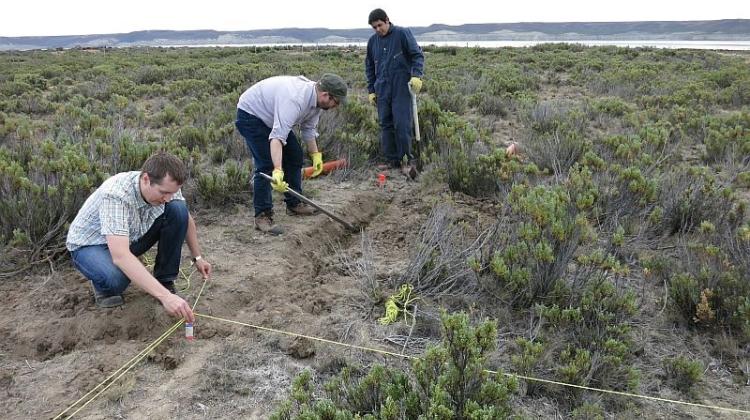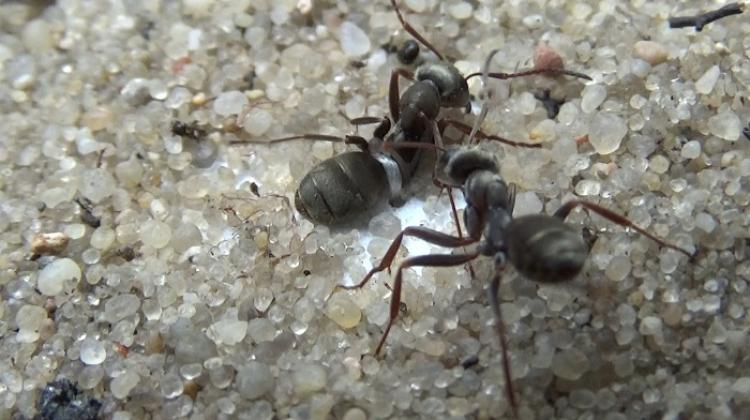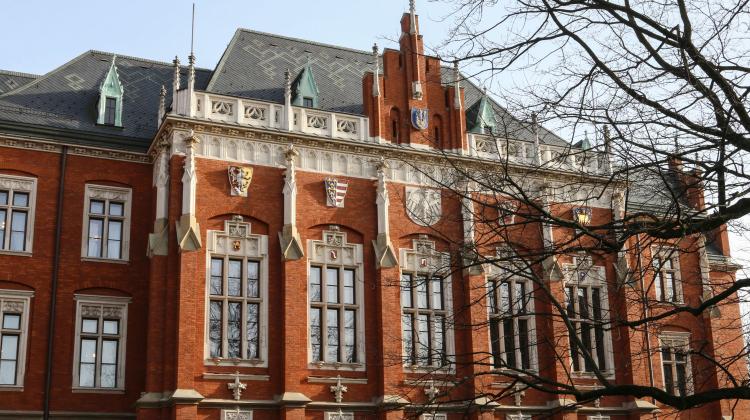Polish measurement system on three continents tracks storms on Earth
 Earthworks near Rio Gallegos during underground installation of the Patagonia station magnetic antennas. Source: Michał Ostrowski
Earthworks near Rio Gallegos during underground installation of the Patagonia station magnetic antennas. Source: Michał Ostrowski
Powerful storms in tropical areas, spectacular lightning and solar flare effects can be studied with underground receivers of extremely low frequency waves. Poles have three such measurement stations: in the Bieszczady mountains, in the USA and Argentina.
Polish global radiolocation system WERA ("World ELF Radiolocation Array") consists now of three measuring stations. The earliest, operating for more than 10 years, is the measuring station Hylaty in Bieszczady. In 2015, the Poles launched the second station - Hugo in Colorado (USA) and the third Polish station - Patagonia in Rio Gallegos, Argentina, began operations in late March.
The task of each of these stations is to capture electromagnetic waves with extremely low frequency (ELF). Registration systems built in Poland collect data on waves of between 0.03 and 300 Hz. The source of such waves can be especially severe lightning, for example during the strongest storms, as well as phenomena associated with space weather.
Combining the data from the three stations in different parts of the world will allow to determine the precise location of the studied phenomena, including giant electrical discharges to the earth\'s ionosphere. The project - led by Dr. Andrzej Kułak from the Faculty of Electronics, AGH University of Science and Technology in Kraków, is carried out in cooperation of research teams from AGH and the Jagiellonian University.
STUDYING TERRESTRIAL AND SOLAR STORMS
Study participant, Prof. Michał Ostrowski from the Astronomical Observatory of the Jagiellonian University explained that the ELF waves detected by the WERA system are generated, for example, during various phenomena associated with space weather. Waves with the lowest test frequency range (the wave period is approx. 30 seconds) occur when the Earth\'s magnetic field is "shaken" by variable solar wind and the streams of energy particles it carries. Studying such waves allows to better understand how the sun affects the Earth.
In addition, the ELF waves allow to study thunderstorm activity on Earth on the scale from minutes to several years and, for example, check how this activity affects climate change. Prof. Michał Ostrowski admitted that the system is not capable of registering any lightning on Earth, because some of them do not have sufficient energy. However, the measuring stations allow to study exceptional events during the storms, including discharges into the ionosphere in the form of so-called "sprites" or "gigantic jets" (GJ). In addition, the equipment is capable of detecting strong positive discharges cloud-ground, which occur anywhere on Earth. "In the case study of discharges into the ionosphere, it is a very unique knowledge. Until now, to determine if any of these discharges occurred, usually we had to see its glow in visible light. Good night time conditions for observation were necessary. We can observe electromagnetic signals all the time - regardless of whether it is day or night, clouds, heavy rain or fog, and whether - for example - the phenomenon occurs in Germany or southern Africa" - noted the scientist.
The equipment allows to track strong discharges occurring anywhere on the globe. "With WERA we have already tracked the discharges that occurred near Cuba, in Africa or South America" - said the astronomer. He admitted that the data from two stations allowed to quite accurately estimate the source of the wave (using, among others, the delay with which the signal reached the receiver). "And now that we have three stations in different parts of the world, the precision of the measurements will improve" - said the researcher.
WERA system stations also help in the study of gravitational waves. They allow to determine whether the precise measurements of gravitational waves made by detectors LIGO in the US and VIRGO in Italy have not been altered by electromagnetic interference.
RESEARCH - LARGE SCALE, BUT WITH MODEST EQUIPMENT
Polish measuring stations are hard to reach, located in areas remote from civilization - in the middle of the forest or on the prairie. And they are hidden underground. It should protect them not only from prying eyes, but also from external factors.
"For example, our station in the Bieszczady Mountains is in a large plastic container buried in the ground. Frankly, it is a tank, like a septic tank - because we know that it can remain in the ground for a long time and not be destroyed. Our electronic measuring equipment is placed inside" - Prof. Ostrowski said in an interview with PAP. He added that the stations in the US and Argentina are even smaller. In addition, the equipment includes magnetic antennas, also buried in the ground at a distance from each station.
Other research teams from different places in the world also have similar measurement stations to study ELF. "But the Polish stations - unlike stations in other countries - are located in areas with very low civilization interference. As a result, and thanks to the development of our team\'s innovative theoretical methods for data analysis, our work allows for more accurate measurements than the other stations that operate in this range" - said Prof. Ostrowski.
He admitted that not all teams want to place measuring stations away from civilization. This is a bit problematic, because the stations do not have an Internet connection. Researchers want to protect measurements against electromagnetic interference. The stations have to be visited every few weeks need to retrieve the data and replace batteries. "We have developed a very effective model of scientific cooperation that ensures free maintenance of our foreign stations. It is provided by local researchers, who in return get access to the collected data. This allows them to conduct their own research, or joint projects with us " - concluded the researcher.
PAP - Science and Scholarship in Poland, Ludwika Tomala
lt/ mrt/
tr. RL
Przed dodaniem komentarza prosimy o zapoznanie z Regulaminem forum serwisu Nauka w Polsce.
















